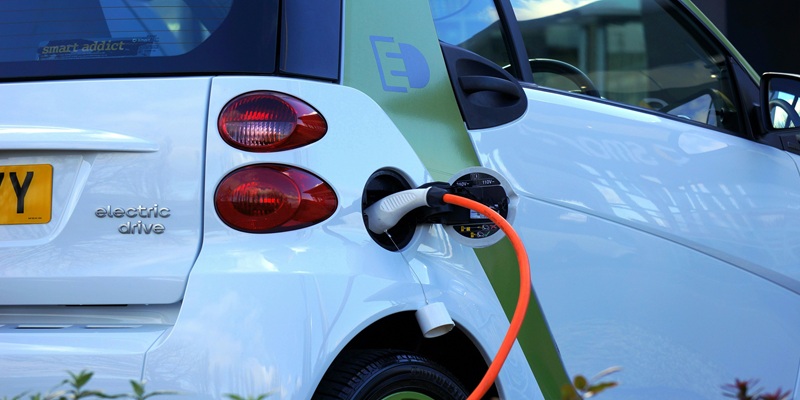Sustainability has become a global priority, and green technology is leading the way. With rising concerns over climate change, pollution, and resource depletion, innovative technologies are helping reduce ecological footprints. From renewable energy to smart grids, these advancements are shaping a greener future.
Renewable Energy Solutions: The Foundation of Sustainability
Renewable energy is at the forefront of green technology. Solar, wind, hydro, and geothermal power are replacing fossil fuels. These alternatives are clean, abundant, and sustainable. Governments and businesses worldwide are investing heavily in these energy sources.
Advancements in Solar Power
Solar energy is evolving rapidly. Photovoltaic (PV) panels are becoming more efficient. Recent breakthroughs have led to flexible and transparent solar cells. These can be integrated into windows and walls. Moreover, solar farms are expanding globally. Countries like China, the U.S., and India are leading in solar energy production.
Innovations in Wind Energy
Wind power is another crucial green technology. Modern turbines generate more electricity with less space. Floating offshore wind farms are now a reality. These innovations harness strong ocean winds, increasing efficiency. Additionally, artificial intelligence (AI) optimizes wind farm operations, reducing downtime and maintenance costs.
Hydropower and Geothermal Developments
Hydropower remains a reliable energy source. However, new approaches focus on minimizing ecological disruption. Run-of-river and micro-hydropower systems generate energy with lower environmental impact. Meanwhile, geothermal energy is expanding. Enhanced geothermal systems (EGS) improve heat extraction, making geothermal power more accessible worldwide.
Energy Storage: Overcoming Intermittency Issues
Energy storage is essential for renewable energy adoption. Without storage, solar and wind power remain unreliable. Fortunately, advancements in battery technology are solving this issue.
Next-Generation Batteries
Lithium-ion batteries dominate energy storage. However, new alternatives are emerging. Solid-state batteries offer greater energy density and safety. Sodium-ion and iron-air batteries are also gaining traction. These alternatives reduce reliance on rare materials, making storage solutions more sustainable.
Pumped Hydro and Hydrogen Storage
Pumped hydro storage remains the most efficient large-scale solution. Water is pumped to higher elevations when energy demand is low. Later, it flows down to generate electricity when needed. Similarly, hydrogen storage is gaining attention. Green hydrogen, produced using renewable energy, offers a clean alternative to fossil fuels.
Smart Grids and Energy Efficiency
Traditional power grids struggle to handle modern energy demands. Smart grids address these issues. They use digital technology to optimize energy distribution and consumption.
AI and IoT Integration
Artificial intelligence (AI) and the Internet of Things (IoT) enhance energy efficiency. Smart meters and sensors monitor real-time electricity usage. AI algorithms predict demand fluctuations, reducing energy wastage. These innovations enable households and businesses to cut down on power consumption.
Decentralized Energy Systems
Decentralized grids improve energy resilience. Microgrids allow communities to generate and store their own electricity. This reduces dependence on centralized power plants. Peer-to-peer energy trading further enhances efficiency. Consumers can buy and sell excess electricity directly, optimizing resource use.
Green Transportation: The Future of Mobility
Transportation contributes significantly to carbon emissions. Green technology is transforming mobility, making it cleaner and more sustainable.
Electric Vehicles (EVs) and Charging Infrastructure
Electric vehicles (EVs) are revolutionizing the automotive industry. Battery advancements are increasing EV range and reducing charging time. Fast-charging stations are expanding globally, improving convenience. Companies like Tesla, Rivian, and BYD are leading the EV revolution.
Hydrogen Fuel Cell Vehicles
Hydrogen fuel cell technology is another game-changer. Unlike EVs, hydrogen-powered vehicles refuel quickly. They emit only water vapor, making them eco-friendly. Countries like Japan and Germany are investing in hydrogen infrastructure to support this technology.
Sustainable Public Transportation
Public transit is also undergoing green transformations. Electric buses, trams, and trains reduce emissions significantly. Autonomous shuttles powered by renewable energy are being tested in major cities. These advancements make public transportation a viable alternative to private vehicles.
Eco-Friendly Construction and Sustainable Architecture
The construction industry is a major source of carbon emissions. Sustainable building practices are crucial for a greener future.
Green Building Materials
Traditional materials have high environmental costs. Green alternatives like bamboo, recycled steel, and rammed earth are gaining popularity. These materials reduce carbon footprints while maintaining durability.
Smart and Energy-Efficient Buildings
Smart buildings integrate AI and IoT to optimize energy use. Automated lighting, heating, and cooling systems reduce energy waste. Green roofs and vertical gardens enhance insulation, lowering energy consumption. Net-zero energy buildings generate as much energy as they consume, reducing dependency on external power sources.
Waste Management and the Circular Economy
Waste is a growing environmental concern. Green technology is enabling better waste management through recycling and upcycling innovations.
Advanced Recycling Technologies
Traditional recycling methods have limitations. Advanced recycling uses AI to sort waste more efficiently. Chemical recycling breaks down plastics into raw materials. This allows for higher-quality recycled products.
Biodegradable and Compostable Alternatives
Biodegradable materials are replacing conventional plastics. Innovations in bioplastics create sustainable packaging solutions. Compostable products further reduce landfill waste. Many companies are adopting these materials to meet eco-friendly standards.
Sustainable Agriculture and Food Production
Agriculture impacts the environment significantly. Green technology is improving food production while minimizing ecological damage.
Vertical Farming and Hydroponics
Vertical farming reduces land use and water consumption. These indoor farms use LED lighting and hydroponic systems. They grow crops without soil, reducing the need for pesticides and fertilizers.
Precision Agriculture and AI
AI-powered agriculture increases efficiency. Drones and sensors monitor soil health and crop conditions. This allows farmers to apply water and nutrients precisely where needed. Such innovations optimize yields while reducing resource wastage.
The Coming Opportunities of Green Technology: Challenges and Opportunities
Green technology is transforming industries, but challenges remain. High costs and slow adoption hinder progress. However, continued research and policy support can drive widespread implementation. Governments, businesses, and individuals must work together. The future depends on sustainable choices.
Conclusion
Green technology innovations are reshaping the world. Renewable energy, smart grids, green transportation, and sustainable agriculture lead the way. While challenges exist, advancements continue to drive sustainability forward. Investing in these technologies is essential. A cleaner, greener future is within reach.



































